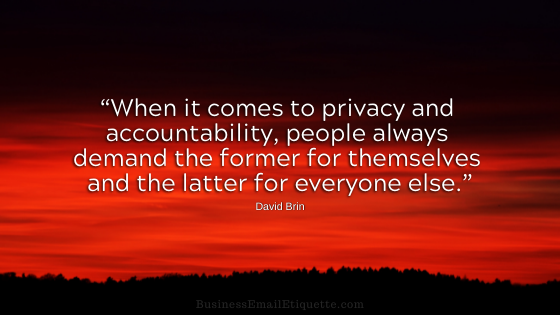The Law: CAN-SPAM and Your Business Email Marketing

CAN-SPAM is not luncheon meat. It’s the law. The law pretty much determines if you are a spammer or not.
We have all experienced an increased level of pandemic marketing campaigns hit our inbox—some of value—others not so much. More businesses are opening up, and with that we have a great deal more unasked-for email in our inboxes.
Way too many business senders do not understand the basic rules for sending commercial emails. No matter how well-intended, emails should only be sent to those who have specifically requested that information.
Playing by the rules is good for branding. Sending emails — to those who give you permission — literally is your best bet for instilling credibility and nurturing relationships. And experiencing conversions.
Don’t tick them off!
The last thing you want to do is tick people off by sending them emails they didn’t ask for. In some cases, repetitively. You then rub salt into that wound. You make the recipient have to unsubscribe from a list they never subbed to. Just lost a potential customer.
Individuals and businesses buy lists. They also tend to incorrectly assume those they have communicated with want to be added to their list.
They then send commercial emails to onliners who did not request their information or advertisement. (I bet you experience this every day, as do I.)
If you are one of those businesses that are buying lists:
- You have vetted the list to know that it is legit, right?
- Do you then send commercial emails to those you do not have direct permission to?
- If you answered No to #1 and Yes to #2, it behooves you to be familiar with what the CAN-SPAM Act requires of you.
Learn About The Law
Here’s a rundown of the CAN-SPAM act main provisions (taken verbatim from the FTC):
- Don’t use false or misleading header information. Your “From,” “To,” “Reply-To,” and routing information? This includes that the originating domain name and email address must be accurate and identify the person or business who initiated the message.
- Don’t use deceptive subject lines. The subject line must accurately reflect the content of the message.
- Identify the message as an ad. The law gives you a lot of leeway in how to do this, but you must disclose clearly and conspicuously that your message is an advertisement.
- Tell recipients where you’re located. Your message must include your valid physical postal address. This can be your current street address, a post office box you’ve registered with the U.S. Postal Service, or a private mailbox you’ve registered with a commercial mail receiving agency established under Postal Service regulations.
- Tell recipients how to opt out of receiving future emails from you. Your message must include a clear and conspicuous explanation of how the recipient can opt out of getting an email from you in the future. Craft the notice in a way that’s easy for an ordinary person to recognize, read, and understand. Creative use of type size, color, and location can improve clarity. Give a return email address or another easy Internet-based way to allow people to communicate their choice to you. You may create a menu to allow a recipient to opt-out of certain types of messages, but you must include the option to stop all commercial messages from you. Make sure your spam filter doesn’t block these opt-out requests.
- Honor opt-out requests promptly. Any opt-out mechanism you offer must be able to process opt-out requests for at least 30 days after sending your message. You must honor a recipient’s opt-out request within 10 business days. You can’t charge a fee, require the recipient to give you any personally identifying information beyond an email address, or make the recipient take any step other than sending a reply email or visiting a single page on an Internet website as a condition for honoring an opt-out request. Once people have told you they don’t want to receive more messages from you, you can’t sell or transfer their email addresses, even in the form of a mailing list. The only exception is that you may transfer the addresses to a company you’ve hired to help you comply with the CAN-SPAM Act.
- Monitor what others are doing on your behalf. The law makes clear that even if you hire another company to handle your email marketing, you can’t contract away your legal responsibility to comply with the law. The company whose product is promoted in the message and the company that actually sends the message may be held legally responsible.
Visit the Compliance Guide on the FTC’s site for all the legal mumbo-jumbo and to download a PDF copy to have on hand.
Don’t be a Spammer
Most folks who email without direct permission do not include the above minimum requirements and therefore cannot complain when reported as spammers or their emails/domains and/or websites get blacklisted. Not to mention the negative perception that possible potential customers may now have of them.
There is no way around the fact that your customer’s inboxes are jammed with junk. Junk they did not ask for, do not want, and inevitably do not read.
Please do your best not to contribute to that clutter. Send out your properly structured emails only to those you know want them and are open to your message.






